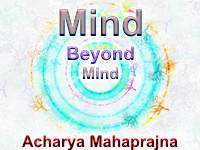
Somebody once approached a philosopher and asked him, 'What is truth? What is delusion?' The philosopher replied, 'What I say is delusion. Your disagreement with what I say is truth.' The world is a web woven out of the threads of truth and delusion and we have been caught into it. Religion is an attempt to search truth. The search for truth is as old as man himself. Equally old is delusion and both will continue together. The importance of religion has been enhanced by the presence of delusion. The latter has grown with the growth of the former. Religion and spiritual exertion are aimed at the attainment of truth.
We have been thinking of gold as a very valuable metal, but we have never thought of dust as equally valuable. The former is very scarce, and therefore, valuable. The latter is available everywhere and therefore it is not valuable. Highly valuable things like gold are dangerous and have been the cause of innumerable strives. Cheaper things like dust have, on the other hand, saved innumerable men. And yet we have not been able to assess the value of dust properly. We value food because it gives us life, but we have not been able to evaluate life itself. What is life except Prana and health? The practice of Sadhana is an attempt to evaluate life, because in Sadhana there are no differences of opinion. People do not like sects because they always create dissensions. I, for one, feel that sects should be allowed to grow and multiply. We should not be afraid of differences of opinion. The only area where there are no differences is the area of spiritual exertion. There are no sects there. Dhyana is the greatest form of Sadhana. It implies the absence of differences, because one who takes to Sadhana does not speak, does not hear and does not see anything. That is why there is no scope for differences of opinion there. A moral life is essentially a spiritual life. Unfortunately we have been paying exclusive attention to the body and have neglected the mind. It is the mind, which is the most influential factor in human life. And yet we have been indifferent to it.
A disciple once asked Buddha, 'Sire, What strength does Dhyana give?' Buddha did not reply and got up to proceed on his itinerary. The disciple followed. They came across a well. They saw a bucket tied to a rope for drawing water from the well. A thirsty man came there, lowered the bucket into the well, and drew it up. But the bucket was empty when it came up. The man tried again and again but every time the bucket came up empty. He tried several times and still the bucket came up empty. The man left it and went away thirsty. The fact was that there were several holes in the bucket, and therefore, it was incapable of holding water. Buddha and his disciple went further and came across another well. Here also they saw another bucket tied to the end of a rope. A man came and lowered the bucket into the well. When he pulled the rope the bucket came up full of water, the man drank the water and quenched his thirst.
Buddha told his disciple, 'Did you mark the two buckets? One who does not practice Dhyana remains empty like the first bucket, because the base on which he lives his life is full of holes and cannot hold any water. One who practices Dhyana is like the second bucket, which is able to hold water because there are no holes in tit. This is the strength which Dhyana commands.'
Sadhana is an attempt at developing the numerous powers, which lie hidden in the human personality in his body and mind.
 Acharya Mahaprajna
Acharya Mahaprajna

